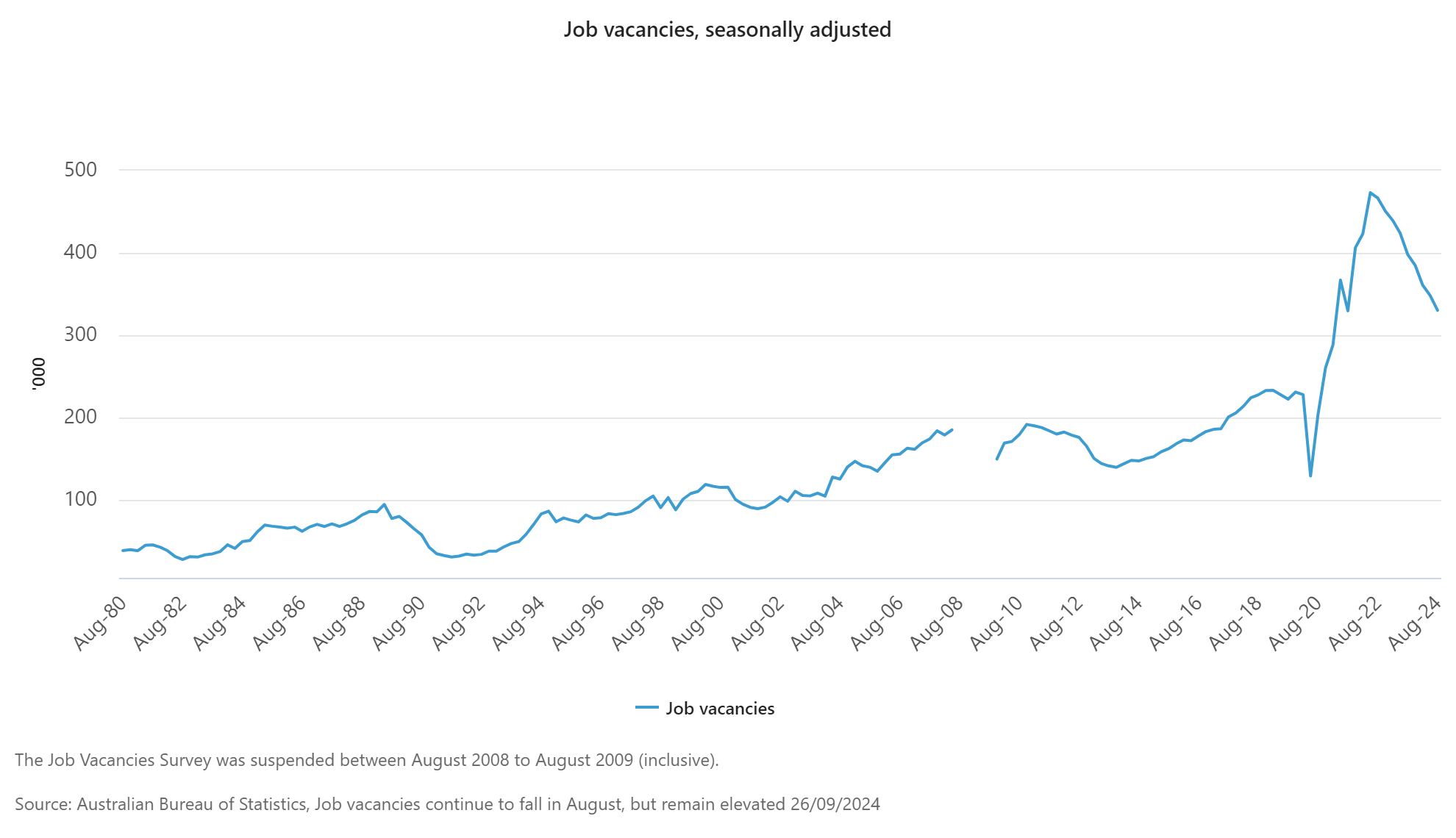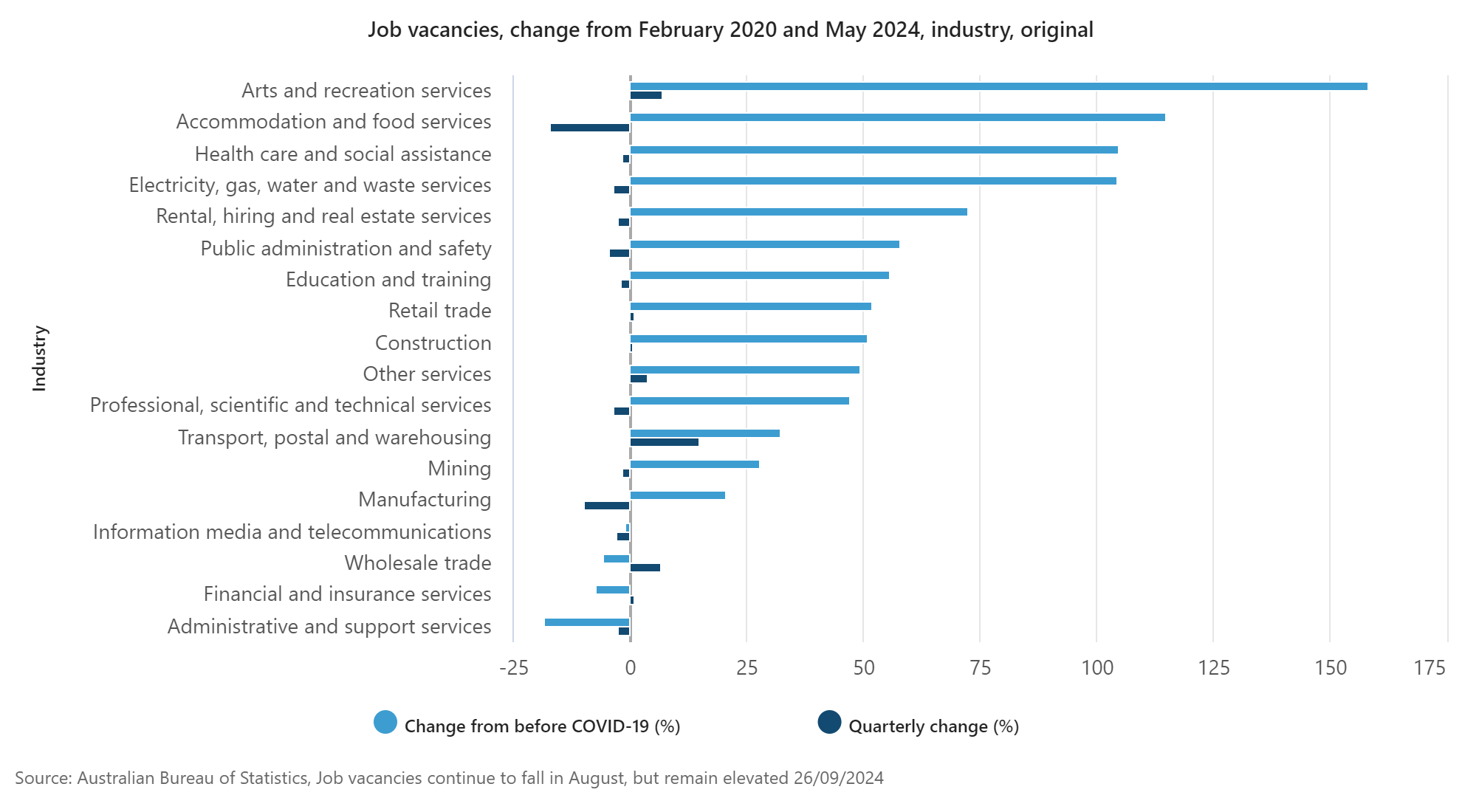The numbers, however, remain higher than before the pandemic

Job vacancies in Australia fell by 18,000 in August 2024, bringing the total down to 330,000, according to the Australian Bureau of Statistics (ABS).
According to David Taylor, ABS head of labour statistics, job vacancies dropped by 5.2% in August, following a 3.5% decline in May. The number of vacancies has fallen for nine consecutive quarters, down from a peak of 473,000 in May 2022.
“While job vacancies have decreased over the past two years, they remain 45.1% higher than before the COVID-19 pandemic,” Taylor said. 
The decline in August affected 11 of the 18 industries tracked by the ABS, with the largest percentage drops in accommodation and food services (-17.2%) and manufacturing (-9.9%).
Transport, postal and warehousing (14.9%) and arts and recreation services (7.1%) posted the strongest quarterly increases, although vacancies in both sectors remain lower than a year ago.
Taylor noted that vacancies were higher than pre-pandemic levels in all but four industries: administrative and support services, financial and insurance services, wholesale trade, and information media and telecommunications. However, arts and recreation services, along with accommodation and food services, still have more than double the pre-pandemic vacancy levels. 
Vacancies fell in both the public sector (-7.5%) and private sector (-4.9%) during the quarter.
South Australia saw the largest state decline (-9%), followed by the Northern Territory (-6.4%). Queensland was the only state to record an increase, with vacancies up 0.9%.
The number of job vacancies can significantly influence mortgage rates as these figures can be a key indicator of labour market strength. A strong labour market suggests that consumers have greater job security and purchasing power, which can lead to increased consumer spending. This, in turn, affects inflation rates, a key factor that central banks monitor when adjusting interest rates, including those that influence mortgage rates. Central banks also rely on labour market data, including job vacancies, when making decisions about monetary policy.
Want to be regularly updated with mortgage news and features? Get exclusive interviews, breaking news, and industry events in your inbox – subscribe to our FREE daily newsletter. You can also follow us on Facebook, X (formerly Twitter), and LinkedIn.



